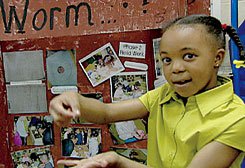What Is Project-Based Learning About?
A description of what teachers can accomplish in the classroom using project-based learning.
Your content has been saved!
Go to My Saved Content.PBL Is Curriculum Fueled and Standards Based
Project-based learning addresses the required content standards. In PBL, the inquiry process starts with a guiding question and lends itself to collaborative projects that integrate various subjects within the curriculum. Questions are asked that direct students to encounter the major elements and principles of a discipline.
PBL Asks a Question or Poses a Problem That Each Student Can Answer
In PBL, the teacher or the students pose a guiding, or essential, question: "What is cystic fibrosis, and how is it caused?" "What would happen if our class formed a business with a real product and started selling stock?" "What will a high school look like in 2050?" "What simple machines can be found in a mill's water wheel?" "How do bacteria in the soil help support life?" "How can we use DNA barcoding to combat the African bushmeat trade?" (These questions are the basis for projects you'll see in Edutopia.org articles and videos.)
"The classroom is a place where people can live a fulfilling life together as a community of learners if needs and concerns are appropriately expressed. Problems can be discussed. Support, encouragement, and models can be provided by both teacher and peers. Where expectations for children's learning are high, it is important that the social interaction itself is designed to facilitate learning." -Education researcher Sylvia Chard
There is more information about crafting essential questions in the How Does PBL Work? section.
PBL Allows Students to Delve into Content in a More Direct and Meaningful Way
Recognizing that children have different learning styles, concrete, hands-on experiences come together during PBL. Field trips, experiments, model building, posters, and creation of multimedia presentations are all viable activities within PBL, and present multiple ways for students to demonstrate their knowledge -- there is no one right answer.
PBL Asks Students to Investigate Issues and Topics Addressing Real-World Problems While Integrating Subjects Across the Curriculum
By creating bridges between subjects, students view knowledge holistically, rather than looking at isolated facts. Education scholar Sylvia Chard says on her Project Approach website that the project approach is an "in-depth investigation of a real-world topic worthy of children's attention and effort."

PBL Fosters Abstract, Intellectual Tasks to Explore Complex Issues
PBL promotes understanding, which is true knowledge. Students explore, make judgments, interpret, and synthesize information in meaningful ways. This approach is more representative of how adults are asked to learn and demonstrate knowledge.
Visit our Project-Based Learning Core Strategy page for more information about PBL.
Continue to the next section of the guide, How Does PBL Work?